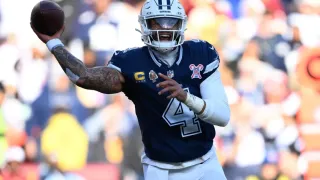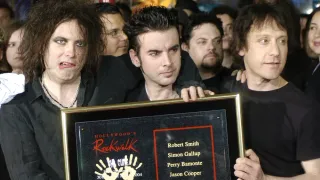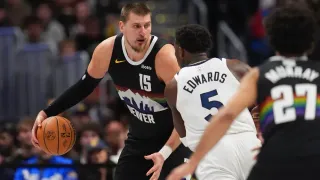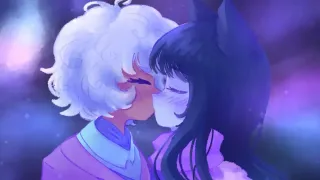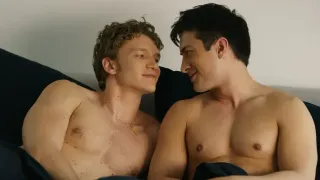November 15, 2023
Review: 'Out in the Ring' Recounts the Rise of Gay Wrestlers
Karin McKie READ TIME: 4 MIN.
Canadian documentarian Ry Levey's "Out in the Ring" won the Best Canadian Film at the 2022 Inside Out Festival. The 100-minute film chronicles LBGTQ+ representation in North American professional wrestling, focusing primarily on gay men, with a nod to lesbian, bisexual and transgender athletes at the end.
Professional wrestlers are artists, many interviewees agree, and they are larger than life because the shows involve choreography, characters, and storylines. Yet, there's an inherent sexual component, too, and much crossover with queer life, with commonalities like Tom of Finland fetish-wear images and 1970s leather culture. Many performers wear exotic underwear, feather boas, teased hair, and glittery capes while they grapple, an amalgamation of the masculine and feminine. "We come here in spandex and want you to pay attention to us," one says.
The history of modern era wrestling began in the 1940s with Dizzy Davis, who wrestled as Gardenia, wearing those fragrant flowers. Jim Barnett, the "Truman Capote of wrestling promotion," founded the current iteration of professional wrestling, including a highly-choreographed script with wildly dangerous moves, and defined tropes like "heat," inciting anger from the audience, and characters like the "heel," a.k.a. the villain.
In Mexico, there were "exoticos," luchadors to whom "besos/kiss" was chanted when they entered the ring. Pat Patterson moved from Montreal to Boston and created a Parisian character, complete with poodle, beret, and cigarette holder. He was also on the down-low with partner Louie Dondero, who became his assistant in order to have a legit reason to travel with him. They could "hide in plain sight" on the flamboyant wrestling circuit, since being gay was illegal and considered to be a mental illness at the time. Their work helped found today's wrestling juggernauts.
Some straight wrestlers would adopt flamboyant dress and attitudes to get more attention, like Austin Idol and Exotic Adrian Street, a legit Welsh bare-knuckles brawler. Adrian Adonis originally wore motorcycle gear, then morphed into a femme flower shop character called Adorable Adrian Adonis. The crowd would chant "faggot" when Rip Rogers entered the squared circle.
Dustin Reynolds embodied a living, breathing Oscar statue as Gold Dust, playing to "the weakness of homophobia," something termed as "weird but compelling." Even as the WWF weathered a sex scandal for allegedly abusing young "ring boys," others created cheap stunts like the tag team of Billy and Chuck, who got engaged in the ring, but weren't really gay. "That hurt LGBT kid fans," one remembers. Heteronormativity was still marketed to the masses.
The documentary also discusses the high premature death rate of wrestlers, compared to the NFL and other professional sports. The volatile nature of other performers and audience members, coupled with being closeted and accompanying mental illnesses like depression, has taken its toll on past and current players. "Wrestlers never have an exit strategy," one interviewee says.
Susan "Tex" Green talks about how many early women wrestlers, including herself, were often taken under the wing of the only female wrestling promoter, the Fabulous Moolah, who was awful. She hated lesbians, so many in her stable had to stay closeted. Moolah was also racist, and was accused of pimping out her performers, too. Later, the WWE's Linda and Vince McMahon joined the ranks of the queer-bashers in the Trump administration. Finn Balor wore rainbow merch to spread a message of inclusion, but he wasn't gay. He later signed a TV deal worth millions with the Saudis, notorious for using capital punishment on homosexuals.
"HLA," hot lesbian action, became a draw for matches. The "9th Wonder of the World," Joanie Laurer, a.k.a. Chyna, became popular, and also wrestled men. Her managers made her get plastic surgery and pose in Playboy. She overdosed in 2016. Orlando Jordan presented bisexuals as freaks. Chris Kanyon came out on the Howard Stern show, then was violently beaten by top tier wrestler The Undertaker in a match. That was the embodiment of many fears about coming out: People will hurt you if you do. Kanyon committed suicide.
Mike Parrow received conversation therapy as a young person, and also considered suicide. He saw most '90s gay TV characters as sassy, but he was a masculine bear. When he accepted his sexuality and publicly came out, he became a more successful wrestler. "A big-ass weight was lifted off my shoulders," he says.
Persian promoter and wrestler the Dark Sheik created Oakland's Hoodslam. The Golden Lovers duo courted ambiguity. Nyla Rose is pro wrestling's first transgender superstar, and Sophie King is openly non-binary. Lady Penelope became more self-actualized by becoming "badass tomboy" Charlie Morgan. Dani Jordyn came out as bisexual during quarantine. African American Darren Young also came out in the WWE, but they didn't protect him; it was considered a PR stunt.
Decades after his career began, Pat Patterson came out, too, which many characterized as a huge step. "Out in the Ring" recounts the performance art of the profession, how it simultaneously created space for, yet punished, queer identities. Now, pro wrestling is a place where LGBTQ+ people can actively participate as promoters and in the ring. "We're here, we just want to wrestle, that's it," one says.
"Out in the Ring" will premiere on November 15th on Fuse and Fuse+.
